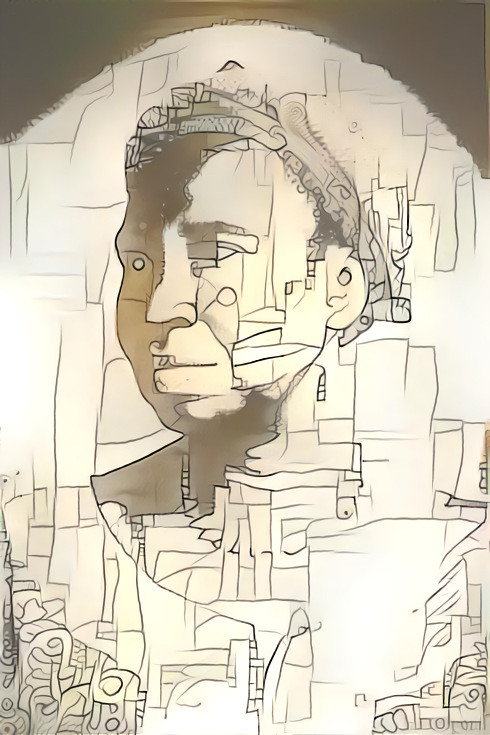AFRODREAMS AI
Ikongio x Okeke
Machine Art
The portraits have been constructed by Artificial Intelligence Algorithm using paintings art of Nigerian modernist Uche Okeke and selected photos. The portraits are an idea of the possibilities of an AI system trained to think like an ùlì artist then using lines, shapes, symbols and monochromatic headshots of africans to create unique art pieces. This project was created as a response to the current wave of implicit bias in AI art.
It is essential to note that irrespective of their specificity, all models of Artificial General Intelligence are built on implicit models of rationality, thereby exhibiting traits of implicit bias. A major driver of bias in AI is the training data. Most machine-learning tasks are trained on large, annotated data sets so creating and using better and more diverse data sets with which to train the algorithms (they learn by processing thousands) would go a long way.
The art of Ùlì, the painting of patterns and designs on the human body and walls is indigenous to the traditional Igbo female artist. Ùlì is both the medium used and the technique of painting on the body or walls. The miniscule motifs marked on the body are enlarged to wall surfaces. Unfortunately, the number of traditional women artists has drastically diminished because of socio-cultural and political factors. However, modernists Uche Okeke, Nsukka school and Zaria art society have enabled uli to enter into twentieth century realism and contemporary art, while preserving its natural form.
The earliest and most extensive archive of Ùlì work in alternative media is held at the Pitt Rivers Museum in Oxford. Throughout the early twentieth century, British missionaries, colonial officers, and ship captains collected examples of Ùlì on paper, many of which were subsequently deposited at the Pitt Rivers museum. The size of this collection, which ranges from 1932 to the 1950s and includes work from the Anambra region and Arochukwu (areas quite distant from one another) is formidable. Along with the MAA, Cambridge, Uk, Smithsonian and International Museum of women, US and Iwalewa Haus, Germnany).
Images: Jeremiah Ikongio, Joana Choumali
References:
Res: Anthropology and Aesthetics, 48: Autumn 2005: Permanent/Impermanent By Francesco Pellizzi
Uli: Metamorphosis of a Tradition into Contemporary Aesthetics, 2010 By Smith, Sandra A.
http://web.prm.ox.ac.uk/bodyarts/index.php/temporary-body-arts/body-painting/196-uli-designs.html










